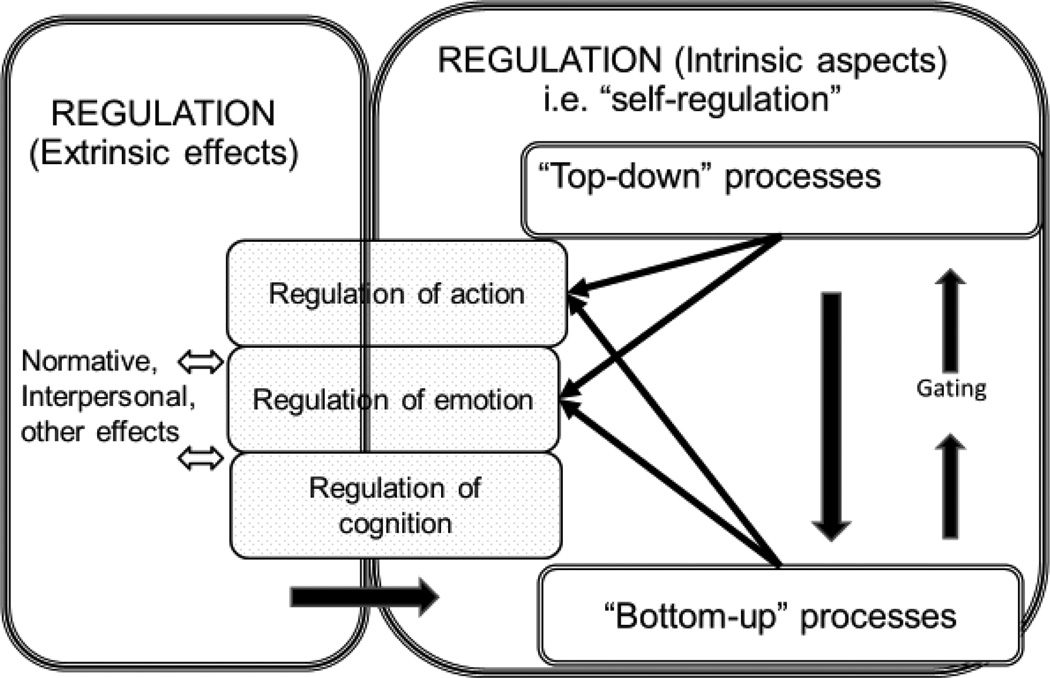Figure 1.
SR entails regulation by one-self (called intrinsic) as opposed to regulating or being regulated via others. SR has top-down and bottom-up components that mutually influence one another. Bottom-up processes are both targets of and sources of regulation (not shown). Bottom-up processes can interfere with top-down SR, but they also help regulate one another and regulate top-down control via a threshold referred to as ‘gating’ which implies continual information updating. Extrinsic regulatory effects can work via both bottom-up and top-down intrinsic processes; the arrow at the bottom illustrates their cross talk via reactive (bottom-up) processes, which are most heavily studied in child development (e.g., behavioral inhibition as described in the text or parental soothing of a child). The present review is concerned only with intrinsic processes or SR, not regulation generally. Not to scale.

